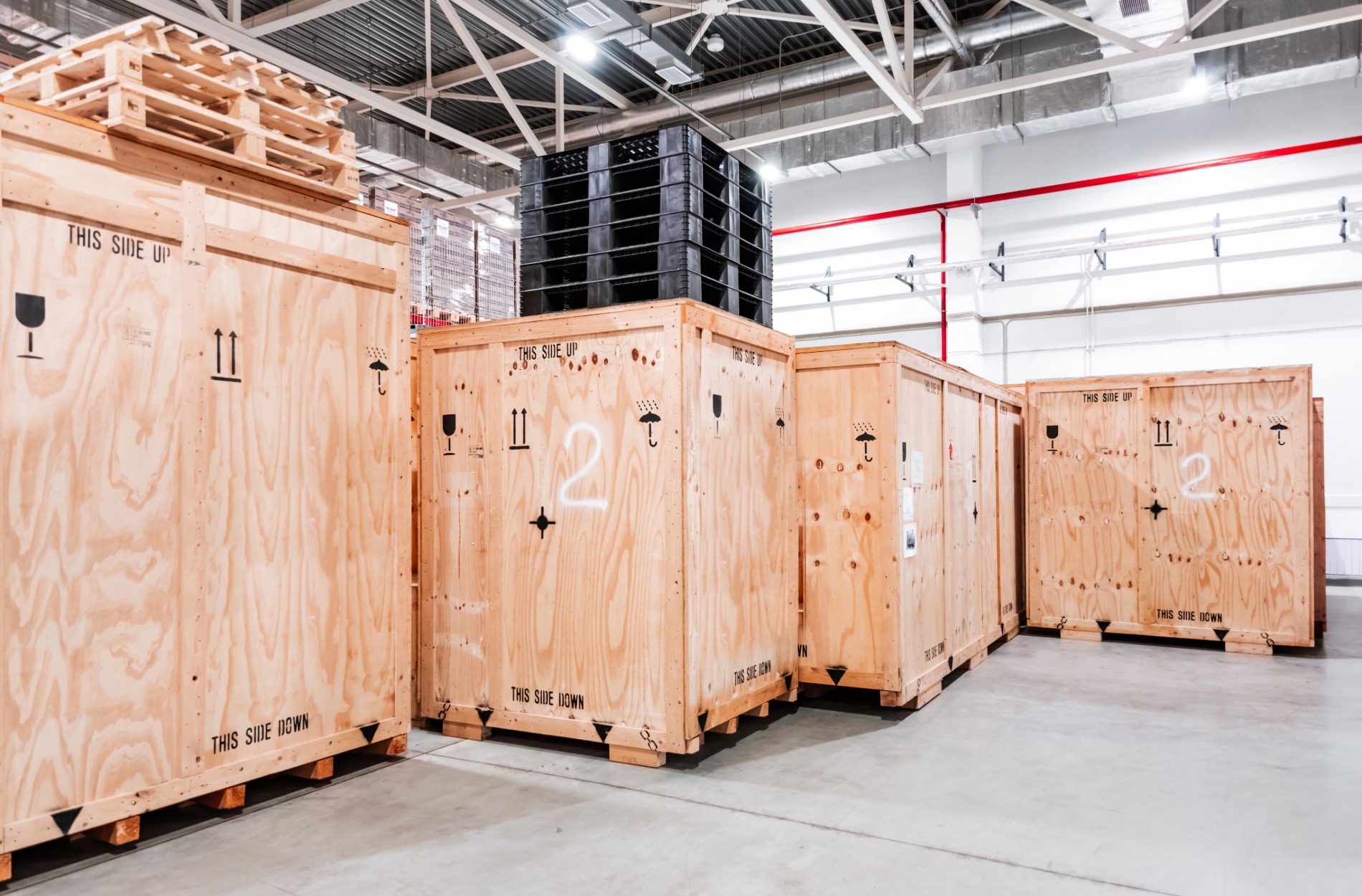When it comes to shipping goods, the type of crate you use can make a big difference in how products arrive at their destination. Export crates and standard shipping crates may look similar at first glance, but their purpose, build, and required regulations vary a lot. Businesses that ship internationally face different challenges than those sending items just a few miles away. That’s why choosing the right crate is important for keeping shipments safe and on time.
Rochester, NY experiences steady year-round shipping activity, both domestic and international. September often kicks off the busy holiday prep season, making it a good time for businesses to take a closer look at their shipping practices. Understanding the roles and construction of different crates helps avoid delays, damage, and compliance issues when demand spikes. If you’re unsure which crate is best for your operation, this breakdown will help clarify the differences.
Understanding Standard Shipping Crates
Standard shipping crates are made for routine deliveries, usually within one country. These crates often use materials like plywood, oriented strand board (OSB), or softwood lumber. They’re commonly moved by ground transportation or domestic air freight.
These crates are built to handle common concerns like impacts during transit, stacking pressure, or minor exposure to dust and moisture. Because they’re used for short trips or within a limited range, they stick to basic construction methods. That keeps them affordable and easy to assemble or recycle.
Typical uses for standard shipping crates include:
– Moving tools or equipment between warehouses and factories
– Shipping boxed goods to U.S. distribution centers
– Transporting items that don’t need customs clearance
– Temporary packaging during plant moves or internal transfers
They’re practical for efficient, short-haul delivery. Their designs are aimed at speed and cost-effectiveness. But they don’t meet export requirements, which can become a problem for cargo heading overseas.
While standard shipping crates work fine in controlled or short-range environments, their limits become clear when shipments cross borders and face new handling risks. That’s where export crates come in.
Characteristics of Export Crates
Export crates are built with the long road ahead in mind. Overseas shipping involves more than just movement. It includes time spent in storage zones, changes in climate, exposure to humidity, and passing through customs.
To handle all that, export crates use stronger materials like heat-treated or certified wood approved under global standards such as ISPM 15. This treatment helps stop pests from spreading between countries and is required for international shipping. Added supports inside the crate help hold the product steady during long trips.
Here are some features that make export crates stand out:
– Made with heat-treated or certified wood
– Follow international shipping rules
– Often include reinforced corners and added bracing
– May have moisture-resistant linings or protective coatings
– Designed to withstand sea air, temperature shifts, and long storage
– Fully customizable to match the shape and weight of each item
A good example is shipping sensitive machinery or tech equipment to another country. Standard crates may not keep gear stable on the ocean or during multiple transfer points. Export crates are made for that kind of job, fitting the cargo tightly and offering added protection throughout the entire journey.
The goal of an export crate isn’t just to hold the item. It’s to safeguard it from the many factors that can affect product condition before delivery. Plus, these crates reduce the chance of customs-related issues that could hold up a shipment.
Key Differences Between Export Crates and Standard Shipping Crates
There are some clear differences between export and standard crates, especially when it comes to strength, compliance, and use cases. While both may look somewhat similar in size or shape, what’s underneath the surface tells a different story.
Let’s look at a quick comparison:
– Materials: Export crates are made from heat-treated wood that’s certified safe for international use. Standard crates may use untreated wood or engineered wood products suited only for local shipping.
– Design: Export crates often include reinforcement, inner braces, water barriers, and tight fasteners. Standard crates are simpler to build and handle for repeat, basic use.
– Compliance: Export crates meet standards like ISPM 15, which helps cargo pass inspections and border checks. Standard crates don’t require this certification.
– Durability: Export crates last longer and can handle harsher travel environments. Standard crates are often designed for one trip or mild handling.
– Cost: Export crates may cost more up front, but they help avoid shipment problems, rejected entries, or damaged goods.
Skipping over these differences can create major headaches. For example, shipping goods to Asia in a crate that doesn’t meet ISPM standards could result in customs delays or cargo being turned away. That kind of disruption wastes money and chips away at customer trust. Understanding these differences helps protect your process and your product.
Choosing the Right Crate for Your Needs
Picking between a standard or export crate comes down to a few main questions: where is your product going, what are you shipping, and how often do you ship?
If you’re sending something to another state, and it’s boxed or built to handle common handling stress, a standard shipping crate will often be fine. But if the product is fragile, expensive, or going overseas, that’s when it pays to think bigger.
Ask yourself:
1. Where is the product headed?
Anything leaving the country via boat or plane needs an export crate for protection and to meet customs rules.
2. What are you shipping?
Heavy industrial tools, medical equipment, or sensitive electronics all need extra packaging layers to prevent expensive loss or delay.
3. How often do you ship?
If your company often sends international freight, setting up solid export crate solutions saves time and stress on your logistics team.
4. Is the cargo oversized?
A large shipping crate helps with bulky or heavy items that won’t fit traditional containers. These crates can be engineered for your product’s shape and transport requirements.
5. Are there any known risks during transit?
Products exposed to moisture, temperature swing, or impacts during transit benefit greatly from export crate features built to absorb the shock and reduce damage.
Choosing the wrong crate for your specific case introduces a lot of guesswork into the process. What looks like cost savings early can turn into delays or losses due to product damage or denied cargo. Matching the crate to the shipment’s journey is the smarter way to keep things on track.
Keep Your Cargo Protected from Start to Finish
Getting shipments delivered in one piece isn’t just about checking a box on a form. It takes planning, the right materials, and a full understanding of what happens between departure and arrival.
A crate that can’t support the trip isn’t just a missed opportunity—it’s a risk. Items get damaged, held up, or rejected altogether when crates aren’t suited for international or heavy-duty travel. Instead of reacting to problems down the road, it makes more sense to get ahead from the start.
Rochester businesses getting ready for fall shipping traffic or preparing international orders need a plan that supports their cargo every step of the way. Whether it’s everyday goods or oversized machinery in a large shipping crate, the right container is your shipment’s first defense. Matching crate type with destination, cargo type, and trip conditions keeps your business moving forward without costly surprises.
Optimize your shipping strategy and protect your cargo with a large shipping crate from Orcon Industries. Whether you’re gearing up for peak season or sending sensitive equipment overseas, our crates are designed to handle the demands of international travel. From added durability to regulatory compliance, we build packaging solutions that move your product with confidence. Learn how your business can benefit from a large shipping crate tailored to your needs.




